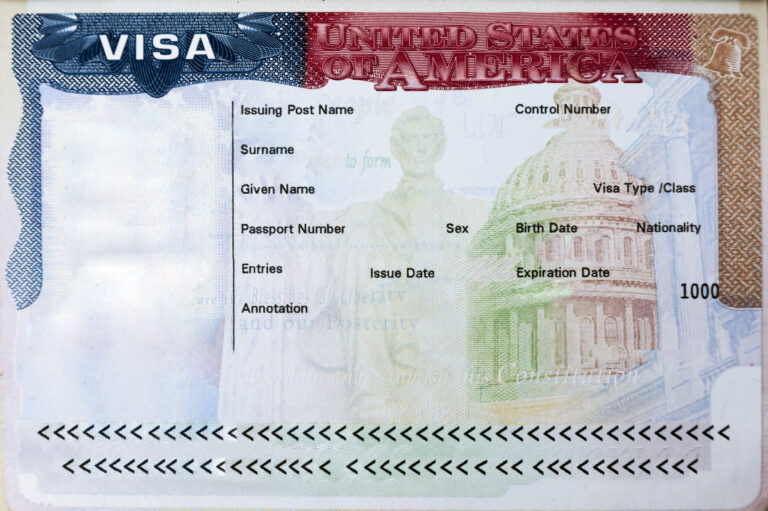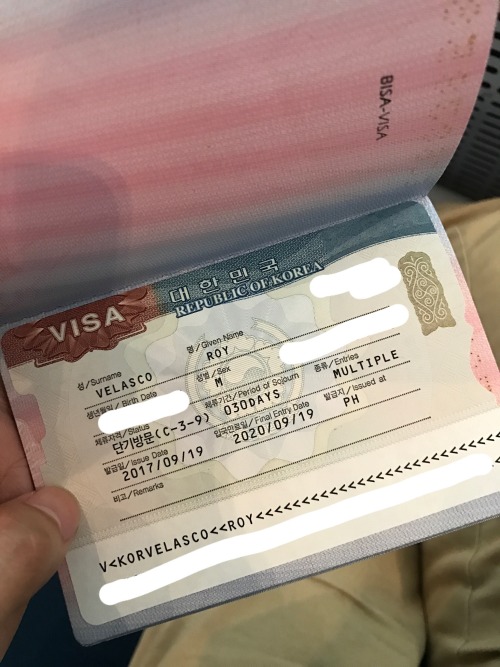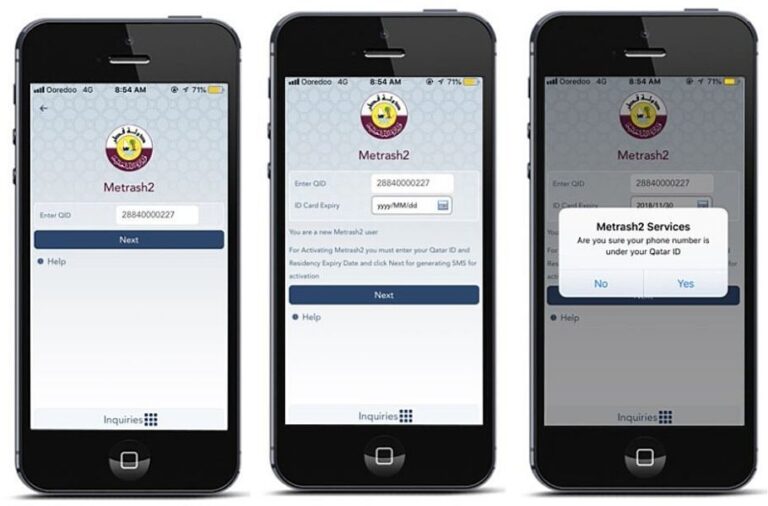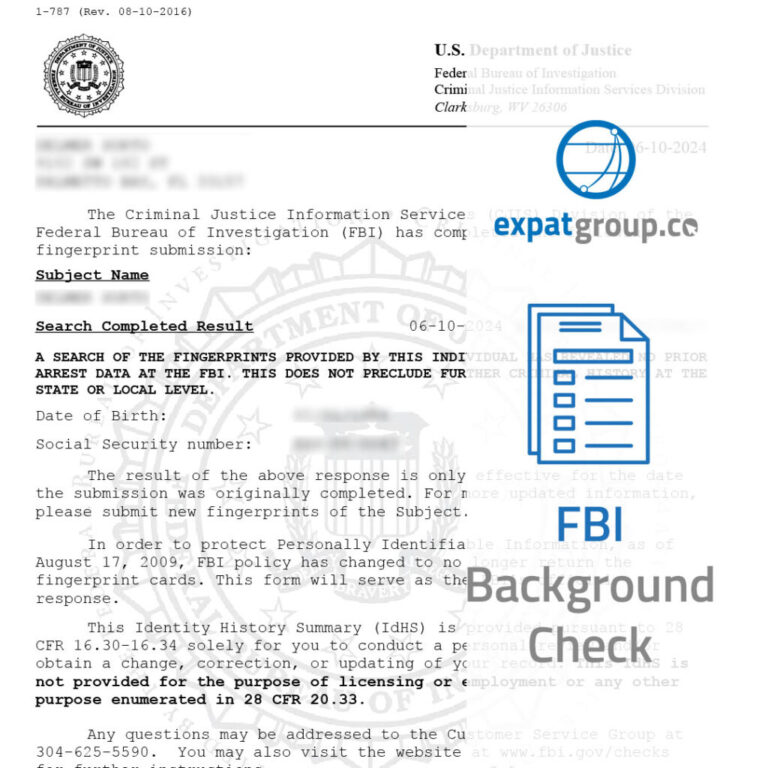Your Ticket to Entry: The Importance of Tourist Visa Fingerprinting
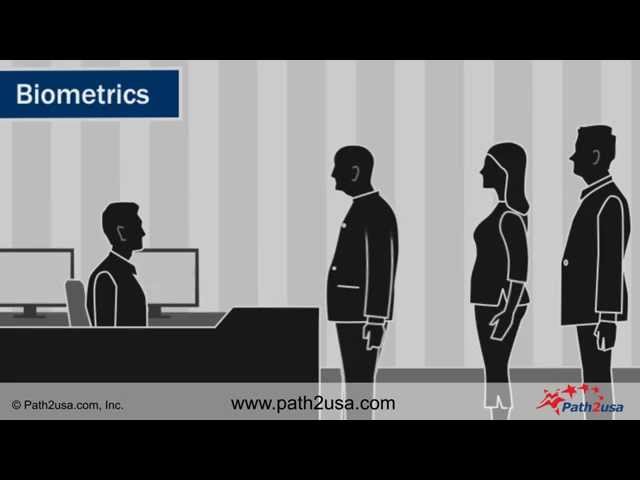
Understanding Biometric Collection
Importance of Fingerprinting
Fingerprinting plays a crucial role in the process of applying for a tourist visa. Almost all applicants are required to provide biometrics, such as fingerprints, to ensure their identity is properly verified and to screen for any prior criminal convictions. This measure not only enhances security but also helps to maintain the integrity of the visa system.
Fingerprinting helps:
- Verify Identity: Confirm your identity upon entry into a foreign country.
- Security Checks: Screen for any past criminal activities or records.
- Efficient Processing: Expedite the visa application process by quickly verifying your information.
Third-Party Fingerprinting Services
In many countries, visa applicants have the option to utilize third-party services for fingerprinting. These services simplify the process by providing convenient locations and often faster turnaround times.
Services like FASTCHECK offer:
- Convenience: Multiple locations for fingerprint collection.
- Speed: Faster processing times compared to government-run centers.
- Accuracy: High-quality fingerprinting equipment ensuring accurate data collection.
Here’s a comparison of typical requirements and services:
| Service Provider | Key Features | Typical Cost |
|---|---|---|
| Government Center | Official documentation, may have longer wait times | Included in visa fee |
| FASTCHECK | Convenient locations, faster processing | $50 – $100 |
| Local Police Station | May require appointments, official documentation | $25 – $75 |
By choosing a third-party fingerprinting service, you can streamline your tourist visa application process and ensure that your biometrics are collected accurately and efficiently. For more information on other important documents, check out our guide on documents for visa interview.
Fingerprinting for Visa Applications
Tourist visa fingerprinting is an essential part of the visa application process, ensuring the security and identity verification of applicants.
Process Overview
When you apply for a tourist visa, you are typically required to provide biometric data, including fingerprints, as part of the application process. This biometric collection helps authorities verify your identity and maintain security (CanadaVisa). The process is straightforward and involves several steps:
- Schedule an Appointment: You need to schedule a biometric appointment at a visa application center or a designated service provider.
- Prepare Necessary Documents: Bring all required documents to your appointment, which may include your passport, visa application form, and appointment confirmation.
- Provide Fingerprints: During your appointment, your fingerprints will be scanned digitally. This process usually takes under 10 minutes.
| Step | Description |
|---|---|
| 1 | Schedule an appointment |
| 2 | Prepare necessary documents |
| 3 | Provide fingerprints |
Digital Fingerprinting Services
Digital fingerprinting is a modern approach to collecting biometric data for visa applications. Many countries allow visa applicants to use third-party services, such as FASTCHECK, to streamline this process.
Benefits of Digital Fingerprinting
- Efficiency: Digital fingerprinting is quick, efficient, and typically takes under 10 minutes.
- Convenience: Services like FASTCHECK offer multiple locations and appointment slots, making it easier for you to schedule at your convenience.
- Accuracy: Digital scanning minimizes errors and ensures high-quality prints, which are critical for identity verification.
Using Third-Party Services
For countries that accept third-party digital fingerprinting services, you can make an appointment with providers like FASTCHECK to have your fingerprints scanned and sent to the appropriate authorities. This method ensures that your biometric data is safely and accurately transmitted as part of the visa application process (FASTCHECK).
| Service | Features | Duration |
|---|---|---|
| FASTCHECK | Multiple locations, quick service, accurate scanning | Under 10 minutes |
By understanding the process and utilizing reliable digital fingerprinting services, you can efficiently complete this essential step in your tourist visa application process. Make sure to check specific requirements for tourist visas and always prepare in advance for a smooth experience.
For more tips and detailed information, refer to our articles on visa application center procedures and tips for securely straightening curly hair.
Fingerprinting Requirements by Country
When applying for a tourist visa, understanding the fingerprinting requirements of your destination country is crucial. This section delves into the fingerprinting regulations in three popular nations: the United States, Canada, and Australia.
United States
In the U.S., fingerprinting is a key component of ensuring border security and verifying the identities of noncitizen visitors. At ports of entry like JFK Airport, visitors are required to scan all ten fingers. The Department of Homeland Security (DHS) collects these fingerprints to add to its extensive database.
With the introduction of 10-finger digital print entry technology, DHS anticipates adding 20 to 23 million fingerprints annually to its pre-existing database of 90 million fingerprints. These records are retained for up to 75 years.
| Data Collected | Fingerprints per Year | Retention Period |
|---|---|---|
| 10-finger digital prints | 20-23 million | 75 years |
Canada
Canada also mandates that foreign nationals provide biometrics when applying for a visitor visa, work or study permit, permanent residence, or refugee status (CanadaVisa). Applicants must provide their biometrics once every ten years, ensuring they don’t need to resubmit until the expiration of the ten-year period.
| Biometrics Requirement | Frequency |
|---|---|
| Visitor visa, work/study permit, permanent residence, refugee status | Once every 10 years |
Australia
In Australia, biometric authentication is integrated into the SmartGate system, primarily for visitors and returning residents with an ePassport. This system links biometric data to individual visas and passports. For certain visa applications, particularly Refugee or Humanitarian Visas, biometric data collection is mandatory. Australia established guidelines for biometrics and privacy in 2006.
| Biometrics Collection | Scope | Guidelines |
|---|---|---|
| SmartGate system | Visitors with ePassport; certain visa applicants | Since 2006 |
Understanding these geographic-specific requirements helps ensure a smoother visa application process. For detailed steps on how to apply for tourist visa and document requirements, please refer to our tourist visa application process.
Biometric Data Usage
Purpose of Data Collection
Biometric data, particularly fingerprinting, plays a crucial role in the tourist visa application process. The primary purpose of collecting biometric data is to establish the identity of the visa applicant and ensure that individuals with prior criminal records or security concerns are identified. This step is essential for maintaining border security and facilitating safe travel for all individuals.
Fingerprinting is a mandatory requirement in almost all visa applications because it provides a clean criminal record check, ensuring that applicants meet the country’s requirements (FASTCHECK). Countries like Australia use biometric authentication systems such as Smartgate to link individuals to their visas and passports. This system allows for efficient and secure entry and exit procedures for travelers.
| Country | Purpose of Biometric Data |
|---|---|
| United States | Verify identity and compare upon arrival (Path2USA) |
| Canada | Required for visitor visa, work or study permit, permanent residence, refugee or asylum status (CanadaVisa) |
| Australia | Link individuals to visas and passports via Smartgate, especially for Refugee or Humanitarian Visas (Wikipedia) |
Data Retention Policies
The policies regarding the retention of biometric data, including fingerprints, vary by country. These policies dictate how long the data will be stored and the conditions under which it may be accessed or deleted.
In Canada, for example, applicants are required to provide their biometrics once every 10 years. This means they do not need to give their biometrics again until the 10-year period expires (CanadaVisa). This ensures that the biometric information remains current and relevant while minimizing the need for frequent updates.
| Country | Data Retention Period | Notes |
|---|---|---|
| United States | Until visa validity expires | Fingerprints may be compared upon reentry (Path2USA) |
| Canada | 10 years | Applicants give biometrics once every 10 years (CanadaVisa) |
| Australia | Variable | Specific guidance issued for privacy and security (Wikipedia) |
Understanding how and why your biometric data is collected and retained can provide clarity and reassurance during the application process. For more details on the specific requirements and procedures, you can refer to our comprehensive guides on tourist visa requirements and tourist visa biometrics.
Special Cases and Exemptions
When it comes to tourist visa fingerprinting, certain applicants may qualify for exemptions based on specific criteria. Understanding these exemptions can help you navigate the visa application process more smoothly.
Age Exemptions
Age-based exemptions are designed to accommodate applicants at both the lower and upper ends of the age spectrum. Some countries have established criteria for these exemptions:
- Children under 14 and adults above 79 years old are exempt from fingerprinting for tourist visas (Path2USA).
- Children under 12 years of age are excused from providing biometric data for a Schengen Visa.
- Previously, applicants 75 years old or older were exempt from fingerprint requirements, but advancements in technology now allow for more accurate fingerprint capturing (USCIS Policy Manual).
| Age Group | Exemption Status | Countries |
|---|---|---|
| Under 12 | Exempt | Schengen |
| Under 14 | Exempt | United States, others |
| Above 75 | Previously exempt, now required | Various |
| Above 79 | Exempt | United States |
For more specific details on exemptions for minors, refer to our article on tourist visa for minors.
Medical Condition Exemptions
Applicants who are unable to provide fingerprints due to medical conditions can seek exemptions. Conditions that may qualify for an exemption include:
- Birth defects
- Physical deformities
- Skin conditions
- Psychiatric conditions
Only certain USCIS officers are authorized to grant a fingerprint waiver under specific conditions.
In addition, applicants with the following conditions may also be exempt:
- Burnt, scarred, or permanently abnormal fingers
- Individuals under the interview waiver program
| Medical Condition | Potential Exemption | Authorized by |
|---|---|---|
| Birth defects | Yes | USCIS Officers |
| Physical deformities | Yes | USCIS Officers |
| Skin conditions | Yes | USCIS Officers |
| Psychiatric conditions | Yes | USCIS Officers |
| Burnt or scarred fingers | Yes | Varies |
For more details on the specifics and process of seeking such exemptions, refer to our article on tourist visa requirements.
Understanding these age and medical condition exemptions can guide you in your tourist visa application process. Make sure to review the documents for visa interview to ensure a smooth application experience. For additional tips, check our guide on tourist visa checklist.
Visa Application Center Procedures
To ensure a smooth tourist visa fingerprinting experience, understanding the procedures at Visa Application Centers (VAC) is crucial. This section outlines the important steps for appointment scheduling and the necessary documents required for your appointment.
Appointment Scheduling
Scheduling an appointment at the Visa Application Center is a mandatory step in the visa application process. You can schedule your appointment online or through dedicated call centers. The VAC appointment must be scheduled before your consulate interview to ensure all biometric data is collected in advance (Path2USA).
Steps for Scheduling an Appointment:
- Create an Account: Register on the official visa application website.
- Select Service: Choose the appropriate service for biometric submission.
- Choose Date and Time: Pick an available slot for your appointment.
- Confirm Appointment: Once your appointment is confirmed, make sure to print out the confirmation receipt.
Recommended Arrival Time:
- Arriving 15 minutes early can help you avoid unnecessary delays and ensure timely appointment processing.
Document Requirements
For the fingerprinting appointment, you need to bring specific documents. Missing any of these can result in delays or rescheduling of your biometric data collection.
| Document | Description |
|---|---|
| Passport | A valid passport that matches your visa application. |
| Appointment Letter | A printed copy of your appointment confirmation. |
| Visa Fee Receipt | Proof of payment for the visa application fee. |
| Application Form | The completed visa application form specific to your visa type. |
Additional Requirements:
- Certain VACs might charge a small fee for services like personal lockers. For instance, the Chennai VAC charges Rs. 50 for locker usage.
Exemptions
Not everyone is required to provide fingerprinting data. According to AXA Schengen, children under 12 years of age, individuals physically unable to give fingerprints, and certain government officials are exempt. Applicants who have provided fingerprints in the last 59 months for a Schengen Visa are also exempt.
For more detailed procedures on how to apply for a tourist visa and specific requirements, make sure to consult our dedicated resources. Always double-check the latest guidelines provided by the VAC to ensure you are prepared and have all necessary documents.
By following these guidelines, you can navigate the tourist visa application process smoothly, ensuring that your biometric data is correctly submitted and your fingerprinting appointment goes as planned.
Biometric Visa Program Overview
Data Collection Process
When applying for a tourist visa, biometric data collection is a crucial step. This process ensures the authenticity of the applicant’s identity and streamlines the visa application process. The biometric visa program involves the collection of digital scans of all fingers and a digital photo. In some cases, a hard copy photo is also required, especially for children under 7 (Path2USA).
During your fingerprinting appointment, ink-free digital imprints of all ten fingers are taken. This technology ensures a quick and hygienic process. The table below summarizes the typical biometric data collected:
| Biometric Data | Details |
|---|---|
| Fingerprints | Digital scans of all fingers |
| Photo | Digital photo of the face |
| Photo (children under 7) | Hard copy photo |
It is essential to arrive at the Visitor Visa fingerprinting appointment prepared, with documents such as your passport, appointment letter, and visa fee receipt. Some centers may provide lockers for personal belongings, often for a small fee (Quora).
Visa Interview vs. Fingerprinting Appointment
Understanding the difference between the visa interview and fingerprinting appointment is crucial for a smooth application process. These appointments, though related, serve distinct purposes within the tourist visa application process.
Fingerprinting Appointment:
- Focuses on biometric data collection
- Includes digital scans of all fingers and a digital photo
- Typically scheduled at a Visa Application Center (VAC)
- Recommended to maintain at least a one-day gap between VAC and consulate appointments (Path2USA)
Visa Interview:
- Conducted at the consulate
- Focuses on the verification of documents and a formal interview
- Requires presenting necessary documents such as the passport, appointment confirmation, and other supporting documents.
Here is a brief comparison:
| Aspect | Fingerprinting Appointment | Visa Interview |
|---|---|---|
| Purpose | Biometric data collection | Verification of documents and interview |
| Location | Visa Application Center (VAC) | Consulate |
| Key Activities | Fingerprints, digital photo | Document verification, interview |
| Required Documents | Passport, appointment letter, visa fee receipt | Passport, documents for visa interview |
For a smooth process, ensure you understand the specific requirements and instructions for both appointments. Check specific guidelines for your country of application, such as those provided in our sections on US, Canada and Australia.
Using third-party services like FASTCHECK can also help facilitate an efficient process, especially if you are unable to attend the appointments directly.
Knowing the distinction between these steps will help you navigate the visa application procedure effectively and ensure you meet all tourist visa requirements.
Tips for Smooth Fingerprinting Process
Navigating the tourist visa fingerprinting process can be straightforward if you follow some essential guidelines. Here are tips to ensure everything goes as smoothly as possible.
Arrival Time Recommendations
Arriving on time for your fingerprinting appointment is crucial. It’s recommended to reach the Visa Application Center (VAC) 15 minutes early. Being punctual helps you avoid any last-minute rush and ensures you have enough time to go through security checks and locate the relevant office.
Make sure you bring essential documents such as:
- Passport
- Appointment letter
- Visa fee receipt
At some centers, you might need to use a locker for personal belongings, which usually incurs a small fee. For instance, applicants at the Chennai VAC for their US visa application are required to pay approximately Rs. 50 for a personal locker.
| Location | Arrival Time Recommendation | Locker Fee |
|---|---|---|
| Chennai, India | 15 minutes early | Rs. 50 |
Specific Instructions for Applicants
To make your fingerprinting process seamless, follow these specific instructions:
-
Schedule Your Appointment: You can schedule your appointment online or via call centers available in India and the United States. Check out more on how to apply for a tourist visa.
-
Order of Appointments: Ensure that your Visa Application Center appointment is scheduled before your consulate interview. This sequence is vital for smooth processing.
-
Arrival Timing: Similar to arrival time recommendations, reach the VAC at least 15 minutes before your fingerprinting appointment.
-
Document Requirements:
- Valid passport
- Appointment confirmation
- Visa application fee receipt
-
Adherence to Instructions: Follow any specific instructions provided by the VAC. This can include guidelines on what to wear, what not to carry, or other procedural details.
By adhering to these tips, your fingerprinting appointment should proceed without any hitches. For more detailed information on the visa application process, including required documents and scheduling, visit our comprehensive guide on the tourist visa application process.
Ensuring you are prepared and informed will streamline your fingerprinting experience. Be sure to stay updated by regularly checking the guidelines provided by the Visa Application Center.

